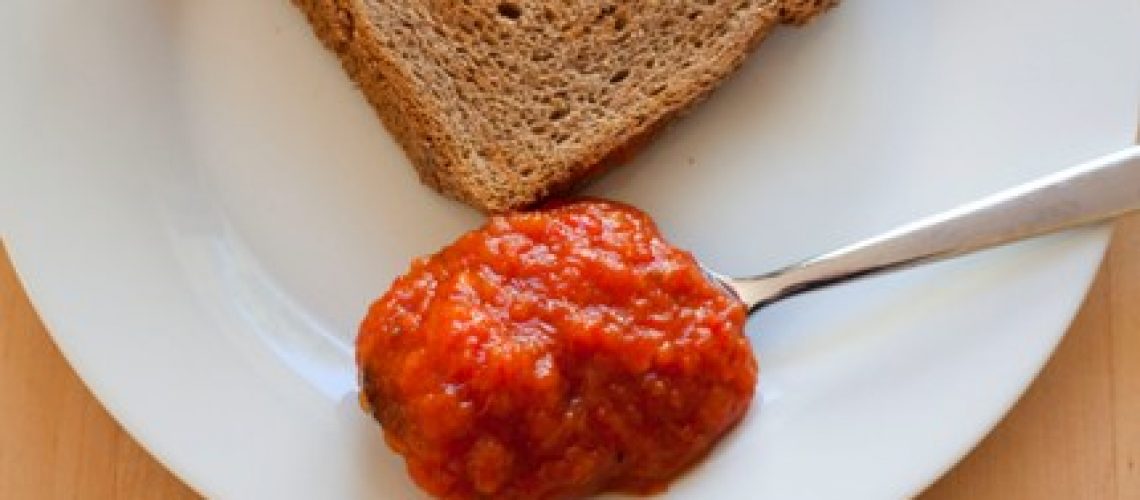I sure am sorry I didn’t think to post this recipe for International Talk Like a Pirate Day – I just missed it, on September 19. Ajvar is pronounced aye-var, and it’s awfully fun to say it with a little nautical sneer and swagger. Arrrr!
This is still an apt time of year to talk about this recipe, when the last of the eggplants and tomatoes are ripening. Somewhere between a spread and a condiment, ajvar is a Balkan staple and was at least partly responsible for my substantial weight gain in the years we were living in the former Yugoslavia. You can buy ajvar at almost any grocery store there, and we discovered that the uglier the packaging, the better the product. My personal favorites generally came from Macedonia, but homemade is really the gold standard. It’s not hard to make, I discovered, but messy. The smell of peppers roasting (often just cooked directly on the stove burners) is for me one of the characteristic aromas of the Balkans, just a whiff and you’re there.
As for the eating, my personal favorite is to use it rather like ketchup, on sandwiches. When Valerian and I were first living together, we bought a little sandwich press, and I proceeded to toast up many, many grilled cheese sandwiches with ajvar, to the point where it was getting hard to button my pants. Oof. I recommend a little more moderation, but ajvar really does perk up a sandwich, makes a great topping for crackers, and could easily work as a pasta sauce rather like pesto if you’re so inclined. The sweet peppers contrast with the very slight bitterness of the eggplant, all playing against a smoky backdrop – it’s a savory trip to Southeastern Europe, right there.
Ajvar
The usual red bell peppers in the US are not quite the same as the peppers you’ll get in Europe, but they work fine in this recipe; if you can find a more typical European pepper, like Pritamin or the others mentioned in Valerian’s pepper guide, use those. Ajvar is often made with hot peppers, too, if you like things a little spicy.
Ingredients
Makes about 2 cups of ajvar
- 4 large red peppers
- 2 medium eggplants
- 2 cloves garlic
- salt & pepper
Method
- Preheat the oven to 450° F (230° C) and line a large baking sheet with foil.
- Pierce the eggplants’ skins a few times with a fork or tip of a knife. Place them and the peppers on the baking sheet and roast for 20-25 minutes or until the skins are blackened in spots and starting to shrivel. Be bold and let them get well cooked, the smokey flavor will be your payoff.
- Put the peppers in a large bowl and cover with a plate, then set them aside.
- Allow the eggplants to cool, then peel back the skins and scoop out the flesh into a medium bowl or the bowl of a food processor. Try to leave out the seeds, although this is very messy and difficult.
- When the peppers have cooled, peel off the skins and discard. Also toss out the seeds, core and stem. Roughly chop the peppers and add them to the bowl with the eggplant.
- Grate or finely mince the garlic, and add about half to start – since it’s raw, go easy at first and taste to see how you like it.
- Using an immersion blender or food processor, puree the mixture to a thick, still somewhat chunky consistency. Season to taste with more garlic and the salt and pepper, and stir it all together.
- Keeps in the fridge for at least a week; this is best a day or two after it’s made.





